
what you'll learn...
overview
The four fundamental elements of Practical Geometry are explained.
1. Constructing co-linear points.
2. Constructing equi-distant points
3. Constructing equi-angular points
4. Constructing parallel points.
Constructing a Line
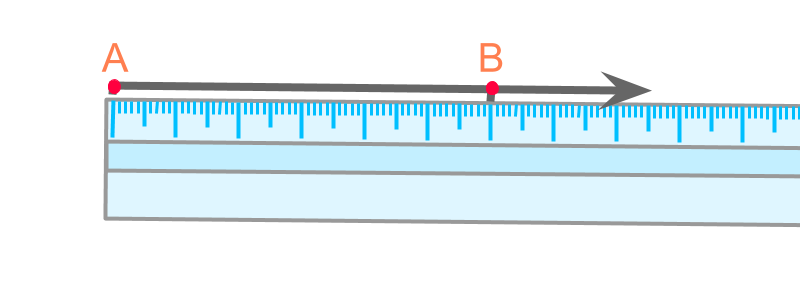
A ruler helps to construct a line through two points.

The points on a line are called "collinear points".
The word "collinear" means: of lying in the same line.
"co" means "together; jointly" ; and "linear" means "line".
summary

Constructing a Line through two Points: Connect two points using a ruler or a scale and extend in both the directions.
Constructing an Arc

A "compass" helps to construct an arc at a distance 55cm from point AA.
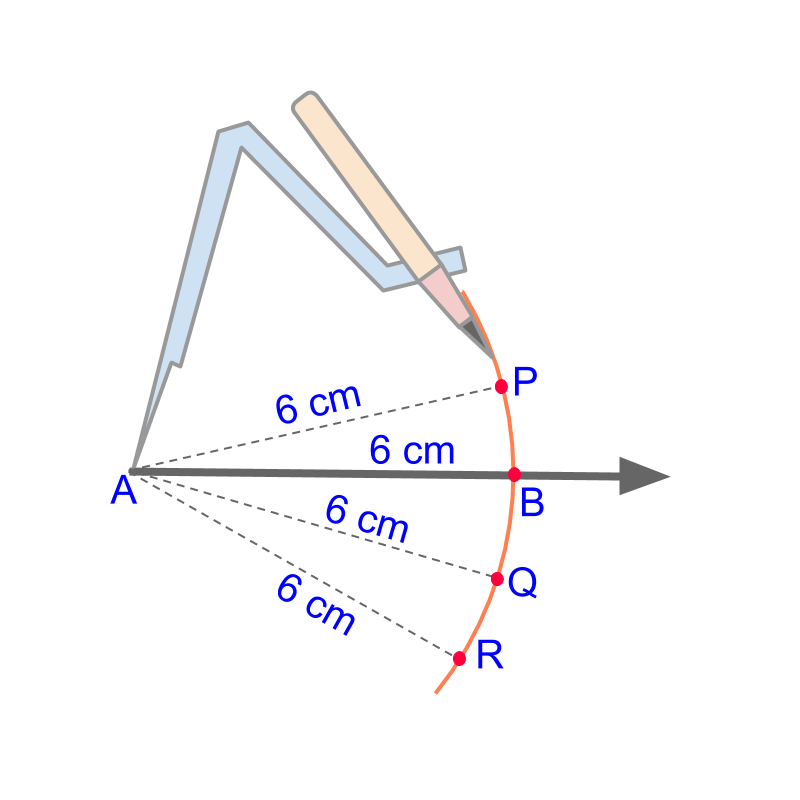
The points on an arc are called "equidistant points".
The word "equidistant" means: at equal distance.
The points PP, BB, QQ, and RR are at the equal distant from the point AA.
summary

Constructing an arc : Measure the distance using a compass and mark the arc at the distance from the point.
Constructing an Angle
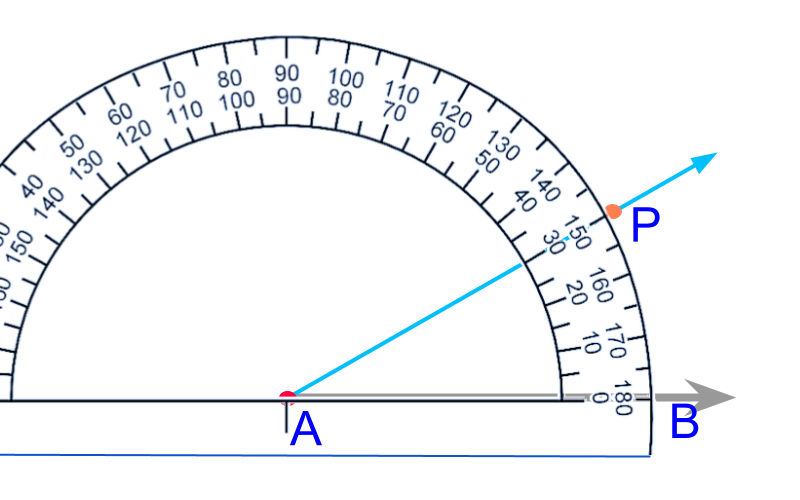
A protractor helps to mark an angle of a given measure.
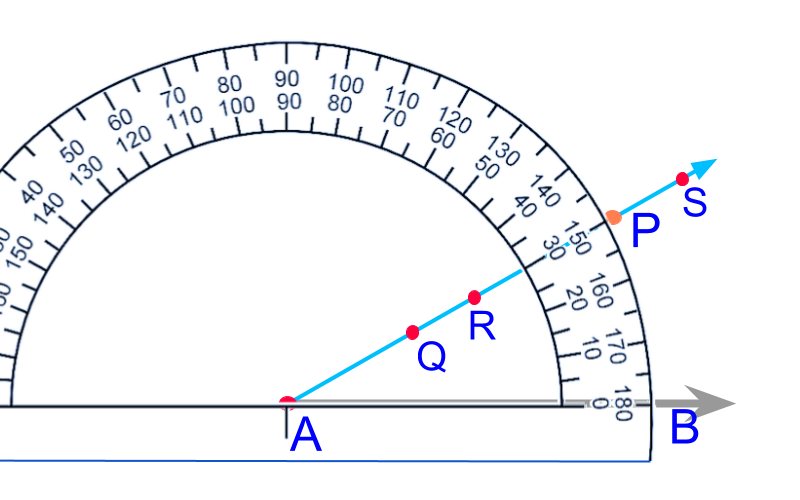
The points on the ray at an angle to ¯AB are called equiangular points to the line.
The word "equiangular" means: having equal angle.
summary

Constructing a given Angle : Using a protractor measure the given angle and extend the ray.
Constructing a Parallel to a given line
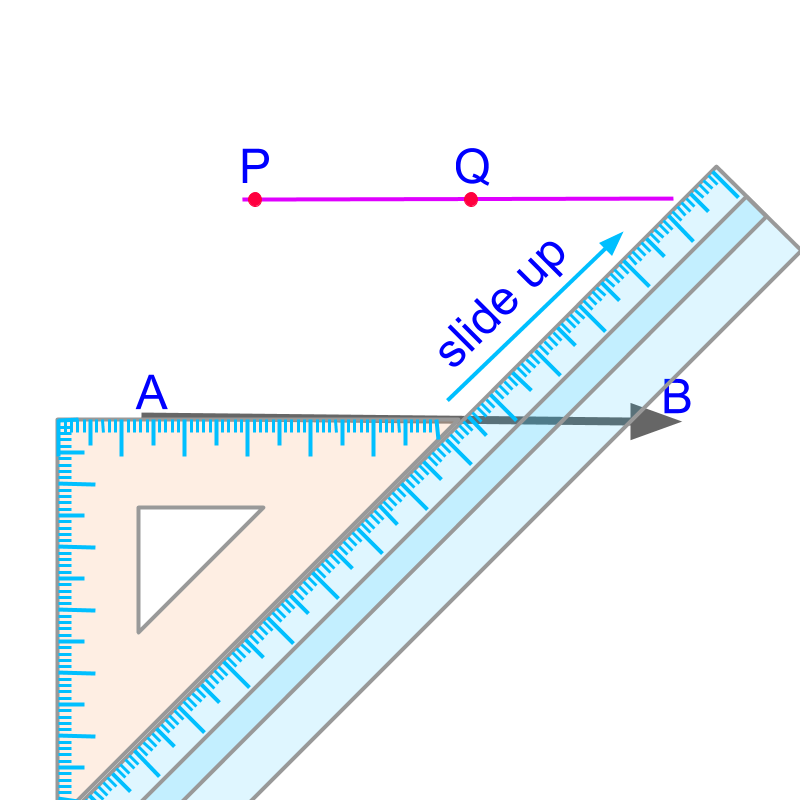
Set-squares or set-triangles help to construct a parallel to a given line.
The word "parallel" means: lines having same distance continuously between them.
summary
Constructing a Parallel : Set a leg of the set-square on a line and slide the set-square along its diagonal. The parallel can be constructed on the leg.
fundamental elements
In practical geometry, we study about constructing
• line segments,
• angles
that make different plane-figures like triangles, rectangles, quadrilaterals, etc. The following are the fundamental elements to practical geometry.
constructing a line (collinear points),
Constructing an arc (equidistant points),
Constructing an angle or (equiangular points), and
Constructing a parallel (parallel points)
The fundamental elements of practical geometry are
1. constructing a straight line using a ruler (which are points collinear to two points).
2. measuring a distance using a compass and marking an arc (which are points equidistant to the center).
3. measuring an angle using a protractor and marking a ray with the angle (which are points equiangular to the initial point)
4. constructing a parallel using set squares (which are points on a line parallel to a given line)
In the course of the lessons, the secondary elements and the end-applications will be explained. For example, bisecting a line or constructing a parallel line using a compass are some examples of secondary elements. The primary elements are used to construct the secondary elements.
And, constructing a square using the length of a diagonal or constructing a parallelogram are some examples of end-applications. These constructions use combination of primary and secondary elements.
summary
Fundamental Elements of Practical Geometry :
1. Constructing a line connecting 2 points using a scale or ruler: Constructing co-linear points.
2. Constructing an arc of given radius with a compass : Constructing equi-distant points
3. Constructing an angle of given measure with a protractor : Constructing equi-angular points
4. Constructing a parallel at a given distance to a line : Constructing parallel points.
Outline
The outline of material to learn "Construction / Practical Geometry at 6-8th Grade level" is as follows.
Note: click here for detailed outline of "constructions / practical geometry".
• Four Fundamenatl elements
→ Geometrical Instruments
→ Practical Geometry Fundamentals
• Basic Shapes
→ Copying Line and Circle
• Basic Consustruction
→ Construction of Perpendicular Bisector
→ Construction of Standard Angles
→ Construction of Triangles
• Quadrilateral Forms
→ Understanding Quadrilaterals
→ Construction of Quadrilaterals
→ Construction of Parallelograms
→ Construction of Rhombus
→ Construction of Trapezium
→ Construction of Kite
→ Construction of Rectangle
→ Construction of Square